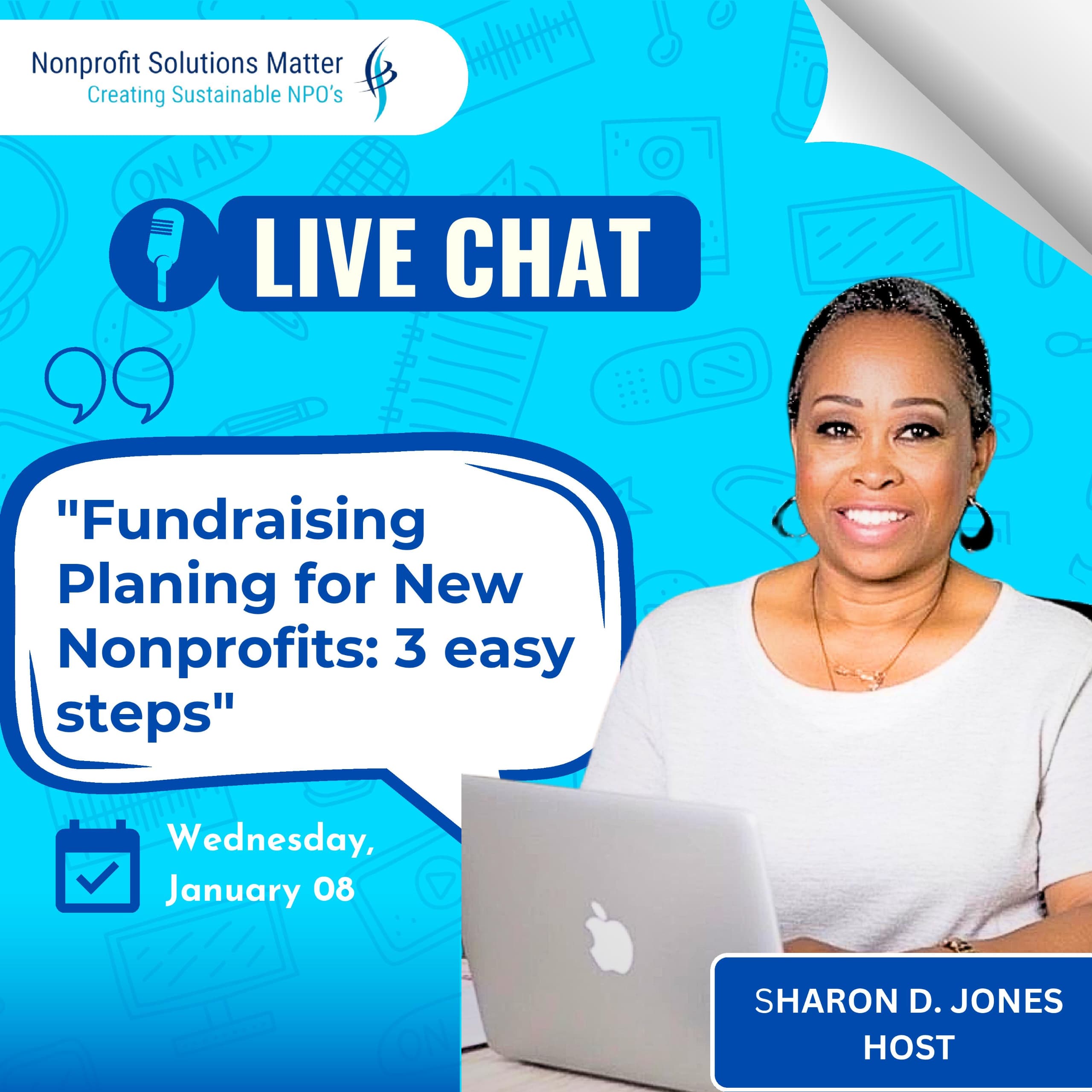The Five Steps to Unlocking Corporate Cash Flow
Hello, lovely people! It's Monday morning, and if you're in the nonprofit sector like me, you're probably asking yourself the same question we always do: How can we raise more money? How can we secure the resources needed to expand our mission, spread our message, and create the impact we’ve always dreamed of?
Well, you’re in luck because I’ve got some top-level strategies you can start executing this week. These will help you raise funds, strengthen your board, and ultimately, grow your organization to the level you envision.
My name is Rooney, Vice President of Nonprofit Solutions Matter. Over the years, our team has helped organizations raise millions of dollars, and today, I’m sharing strategies we’ve seen work time and time again. If you’re struggling with fundraising, building board capacity, or just getting your nonprofit off the ground, don’t hesitate to reach out. I’m more than happy to walk you through how we can help—there’s a link at the end of this article where you can schedule a free call with me. https://calendly.com/solutionsmatter/freeassessment
So, let’s get into today's topic: How to Unlock Corporate Cash Flow for Your Nonprofit.
---
Why Corporate Cash Flow?
Fundraising is a constant challenge for nonprofits, and looking for ways to fund your mission can feel like a full-time job. From grant writing to individual donations, there are a variety of strategies available. But among all the approaches, corporate cash flow stands out for several reasons.
- It’s reliable. Corporate partnerships, once established, tend to provide consistent funding over time.
- It’s based on value. These partnerships are mutually beneficial—corporations support causes that align with their values and market goals, while nonprofits gain financial backing to drive their impact.
- It’s fast. With the right approach, you can move from pitching to funding quickly, often faster than grant approvals or individual donations.
Corporate giving was around $36 billion in 2023, while corporations themselves made over $1.1 trillion. They’ve long understood that giving back enhances their market share, builds brand loyalty, and positions them as community leaders. But $36 billion is only a fraction of what’s possible. Imagine the impact if corporate giving reached 10% of corporate earnings. That’s a worthy goal, isn’t it?
So, how do you ensure your nonprofit taps into this opportunity? I’ll walk you through five essential steps to unlock corporate cash flow for your nonprofit.
Step 1: Resource Assessment & Strategy Development
The first step is planning. Bring together your board and key players to assess your organization’s current resources. This is where you decide what benefits your nonprofit can offer to corporations and define your strategy for reaching out to them.
Ask yourself:
- What value does your nonprofit bring to the table?
- What kinds of corporations align with your mission?
- What do you want to raise, and how do you plan to achieve it?
This phase is crucial because successful execution isn’t a solo act. You need everyone—staff, board members, and volunteers—on board and aligned. Involving them from the start ensures collective ownership of the strategy. Everyone should understand the benefits you’re offering to corporations and agree on the types of companies to target.
Step 2: Build the Infrastructure & Team
Once you’ve outlined your strategy, the next step is to build the infrastructure and team needed to execute it. Think about the tools you need—whether that’s a proposal template, CRM software, or a dedicated landing page—and the people who will implement the strategy.
I’ve found that one of the most effective ways to tackle this is by forming a committee dedicated to corporate partnerships. This group could include volunteers, staff, and board members:
- Volunteers and staff can initiate relationships with corporate contacts and nurture them.
- Board members can step in when it’s time to make the formal ask and negotiate terms.
With the right team and tools in place, you’ll be set for success.
Step 3: Onboard & Build Capacity
With your team assembled, the next step is onboarding and capacity building. This is where you clearly define everyone’s roles and responsibilities within the strategy. Make sure each team member knows what tools are available and how they contribute to the overall goal.
But knowing what to do isn’t always enough. People need the skills to execute effectively, which is where capacity building comes in. For example, board members might understand the concept of asking for money but lack the skills to negotiate effectively. By providing targeted training, you ensure your team is prepared to deliver when it counts.
Step 4: Excellent & Efficient Execution
Execution is where many nonprofits falter. Too often, I’ve seen organizations send out mass emails to corporate contacts, only to get crickets in response. Why? Because blasting emails asking for money doesn’t work.
Corporate partnership outreach requires a more personal, strategic approach. Instead of asking for money upfront, focus on building a relationship first. Try connecting with the right department, positioning your nonprofit’s value, and making a meaningful introduction.
Additionally, your team needs a clear schedule for executing the plan—whether that’s outreach, meetings, or follow-ups. And remember, it often takes six to eight touches to get a response, so persistence is key.
Finally, as you start to gain traction, don’t hesitate to scale up. If your approach works, double down and expand your outreach to more corporations.
Step 5: Account Management & Follow-Up
Once you’ve secured a corporate partner, it’s not the end—it’s the beginning. Account management is critical to ensuring long-term success. You need to deliver on the promises you made and maintain the relationship. Why? Because a satisfied corporate partner can open doors to even more opportunities.
Assign someone on your team to manage corporate accounts, ensuring you meet all expectations and maintain open lines of communication. If you manage these relationships well, your corporate partners may become advocates for your organization, introducing you to their networks and providing more funding opportunities down the line.
Corporate cash flow can be a game-changer for your nonprofit, but it takes planning, teamwork, and persistence. Every effort you put into outreach, relationship-building, and follow-up accumulates over time. Don’t be discouraged if results aren’t immediate; the key is to stay consistent and committed.
If you’re ready to take the next step and want personalized advice on unlocking corporate cash flow for your organization, feel free to schedule a free call with me. Together, we can map out a strategy tailored to your nonprofit’s needs.
Thanks for tuning in today! Tomorrow, I’ll be diving deeper into the different forms of corporate partnerships and how to maximize them. Until then, keep pushing forward, and remember, every step you take is a step closer to success.
Bye for now!
Rooney, Vice President of Nonprofit Solutions Matter
https://calendly.com/solutionsmatter/freeassessment























































